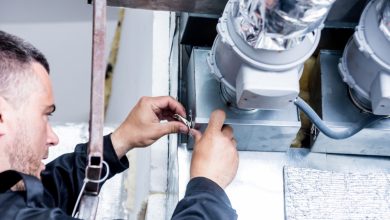What are the steps in building a foundation?

What are the steps in building a foundation?
Digging the Excavation
After constructing the sump, the next step is digging/excavating for the foundation of the building. This is an important stage as the dimensions of the foundation have to be perfectly right.
Building the foundation
This is a crucial stage because, if the foundation’s measurements are off, it will have an impact on the future spaces. The quality of the soil determines the depth of the foundation, and the site conditions determine the foundation’s design. The excavation drawing and foundation details are prepared by the structural designer. It is then approved by the Architect.
MARKING THE EXCAVATION:
Marking: The excavation plan is marked by the contractor at the site and the dimensions are cross-checked by the Architect. It is advisable that you also check the dimensions as any mistake can be brought to the Architect’s and Contractor’s notice so that it can be rectified before it is late. Once the marking has been approved, the excavation can begin.
DECIDING THE EXCAVATION DEPTH:
Excavation: The excavation can start as soon as the marking has been approved.
Depth of excavation: The excavation depth depends on the soil condition. Digging is done till hard soil is reached.
Filled-up soil: If your site/Layout is formed on lakes or low-lying areas, it may have a lot of filled-up soil. In such areas excavation must be done till the firm ground is reached. Make sure the building is resting on solid ground even if it means you have to go 15 feet down because otherwise, it will affect the stability and strength of the house. The best builders in Coimbatore always make sure that the area is ready for excavation.
Anti-termite treatment: Before laying the foundation, make sure that the trenches and excavated areas have been given the anti-termite treatment by the Contractor. This will ensure protection against termites and other pests from underground, in the future.
BUILDING THE FOUNDATION:
Once the excavations are done, the next step is to build the foundation.
Load bearing structure foundation: A bed of concrete (PCC) is laid at the base of the trenches and the foundation masonry is built using size stones in accordance with the foundation details provided by the structural designer.
Column-beam frame structure system: In this case, a mat of steel bars tied together according to the structural engineer’s specifications is placed at the bottom of the footing pit. The steel bars for the column are also tied in place with the help of a bonding wire. Column boxes are erected around it for pouring concrete.
Pouring concrete: After the architect and structural engineer have approved the steel details and the quality of work, the concrete can be poured. Concrete can be prepared at the site or the construction contractor may opt for ready mix concrete (RMC) if there are very large footings and large requirements for concrete.
Plinth Beam: After the concrete columns have been raised to the Plinth beam level, the plinth beam is erected for the walls of the house to rest on.
CURING OF FOUNDATION:
Curing is very important during the civil construction period. If not done properly, cracks can appear and even the strength and life of the building components can be affected. Curing ensures that certain chemical reactions take place which strengthens the structure.
Chemical reaction during curing: There are two types of chemical reactions. One is that releases heat during the process (Exothermic) and another that absorbs heat (Endothermic). The mixing of cement with water is an exothermic reaction due to the presence of limestone. Because of this heat generation, the water in the mortar or concrete mix evaporates even before the compound gains strength. But for the structure to gain maximum strength, chemical reactions in a cement compound must go on and this can happen only in the presence of water and at an ambient temperature. Hence there is a need to preserve the water content and the ambient temperature. This is achieved by regular curing.
Starting the Curing process: Curing should start the very next day after the concrete has been poured. Initially, more water will be absorbed by the concrete elements, but after a week, the water required will be much less. If there is water runoff when water is poured on new construction, curing should be stopped. The hotter the outside temperatures more amount of curing is required. Curing should be done at least twice a day three times is better
Curing of Columns: For columns, the preferred method is to wrap the pillar with wet gunny bags and then wet them regularly. This is carried out because the column does not absorb much water as it runs out as it is being poured. Therefore, the gunny bag method is employed to guarantee that the column cures uniformly. Sometimes a polythene bag or plastic bottle with a small hole is placed on the column so that the gunny bags are constantly wet and the water drips slowly.
VASTU SHASTRA PRINCIPLES FOR EXCAVATION AND FOUNDATION:
Lucky day: The Excavation work for the foundation of the Building should start on an auspicious day, from the North-East corner of the building and end in the South-West corner. Therefore, the direction of excavation should be from N-E to S-E, then S-E to S-W corner. Simultaneously, the excavation should be from N-E to N-W, then N-W to S-W corner.
Shilaanyaasa: It is the foundation laying ceremony. The stone that is dedicated during the Vastu Pooja is set first in the South-West corner. It is at the excavated trenches after the foundation excavation is finished.
Construction work: The construction work should be started from the South-West corner to the North-East corner. It may be like laying the bed concrete, stone foundation or column footing, etc.
Filling: The filling of earth within the foundation should be done from the South-West to the North-East.
Conclusion
Once you have decided on the type of construction method that you want to adopt. Then the next step is to build the foundation. Likewise, the foundation of the building should be strong as required to lead a long life. Additionally, reach out to the top construction companies in Coimbatore who are the best and most experienced home builders and construction firms to get started on your dream home.




